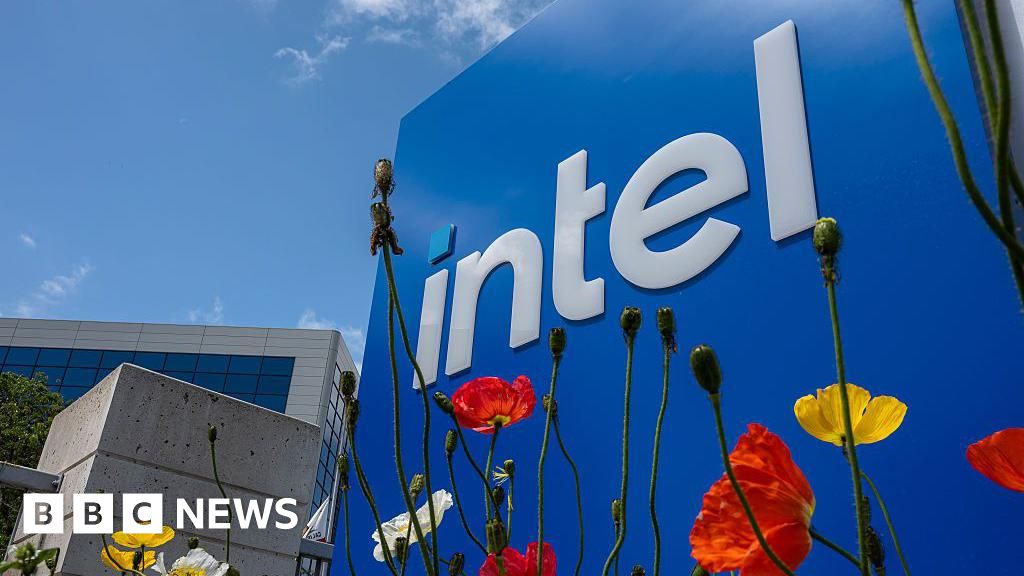Effective Long Term Strategic Planning for Sustainable Business Growth

Long-term strategic planning for success involves creating a roadmap that outlines your organization’s objectives over a period of 5 to 20 years. It’s vital to align your resources with these goals, whether they focus on growth or preparing for retirement. By establishing measurable goals and key performance indicators, you can track progress effectively. Nevertheless, comprehending the common challenges and how to adapt your strategy over time is fundamental for achieving your desired outcomes. What steps can you take to guarantee your plan is effective?
Key Takeaways

- Long-term strategic planning sets clear objectives and strategies that span 5 to 20 years to guide organizational success.
- It aligns resources and capabilities with long-term goals, facilitating effective resource allocation.
- Establishing measurable goals and KPIs allows organizations to track progress and adapt strategies as needed.
- This planning process identifies potential risks and prepares organizations to respond to market changes effectively.
- Engaging employees in the strategic planning fosters accountability and commitment, increasing overall organizational engagement.
Defining Long-Term Strategic Planning

Long-term strategic planning is essential for any organization aiming to achieve significant, lasting success. This process involves setting clear objectives and strategies that span 5 to 20 years, focusing on broad goals like business expansion or retirement.
In your long-term planning efforts, you’ll need to align your resources and capabilities with these goals as you consider potential risks and mitigation strategies. Effective long-term business planning requires evaluating both internal and external environments to identify opportunities and threats, helping your organization adapt to changing market conditions.
Key components include establishing measurable goals, creating timelines with specific milestones, and identifying key performance indicators (KPIs) to track progress. Engaging stakeholders throughout this process encourages commitment and alignment within your organization.
The Importance of Long-Term Strategic Planning

Long-term strategic planning is essential for aligning your organization’s vision with its goals, ensuring that every resource is directed in pursuit of achieving success over the next 5 to 20 years.
By identifying potential risks upfront, you can develop effective strategies to mitigate them, which improves resilience in a fluctuating market.
In the end, a well-structured plan not merely guides your actions but likewise positions your organization to adapt quickly to future changes.
Vision Alignment Benefits
When an organization aligns its efforts with a clear vision, it sets the stage for increased employee engagement and overall success.
By focusing on long-term planning, you guarantee that your short-term plan supports long-term goals, creating a cohesive strategy. This alignment boosts employee engagement by up to 20%, as they see how their contributions fit into broader objectives.
Moreover, organizations with a defined long-term vision are 50% more likely to achieve their goals, thanks to a clear roadmap for decision-making and resource allocation.
Collaboration across departments likewise improves, leading to a 25% increase in cross-functional project success rates.
In the end, embracing long-term planning positions your organization to adapt more effectively to changes, enhancing resilience and overall performance.
Risk Mitigation Strategies
Aligning your organization’s vision with risk mitigation strategies is crucial for maintaining stability and achieving long-term success. By evaluating potential risks over a 5 to 20-year horizon, you can proactively develop strategies that minimize negative impacts. Here’s a simple overview of how short, medium, and long-term plans contribute to risk management:
| Time Frame | Action Steps | Expected Outcomes |
|---|---|---|
| Short Term | Identify immediate risks | Quick response capabilities |
| Medium Term | Analyze trends and prepare plans | Improved adaptability |
| Long Term | Continuous monitoring and evaluation | Sustainable growth |
Incorporating these strategies nurtures a culture of adaptability, enabling your organization to pivot effectively as market conditions change. Remember, robust long-term planning increases your chances of successful risk management outcomes by 30%.
Key Components of a Long-Term Strategy

A successful long-term strategy hinges on several key components that guide organizations toward their overarching goals.
First, you need to set clear objectives that span 5 to 20 years, focusing on significant aspirations like business expansion or sustainability.
Next, thorough resource allocation and capability alignment are vital to guarantee your vision is achievable over time.
Incorporating risk management is likewise fundamental; identify potential risks and develop proactive strategies to mitigate them.
Establish key performance indicators (KPIs) to measure progress against your long-term goals, keeping your teams accountable.
Finally, regular reviews and adaptations of your strategy allow you to respond effectively to changing market conditions and seize emerging opportunities, ensuring your organization remains on course for success.
Steps to Develop a Long-Term Strategic Plan

Developing a long-term strategic plan involves several vital steps that guide your organization toward achieving its goals over a 5 to 20-year horizon.
To create an effective plan, follow these steps:
- Define clear objectives that align with your company’s vision.
- Evaluate available resources to understand your current capabilities.
- Identify potential obstacles that could hinder progress.
- Create a timeline with specific milestones to maintain focus and track achievements.
- Establish key performance indicators (KPIs) to measure progress against your long-term goals.
Regular communication with team members and stakeholders guarantees everyone stays aligned and committed to the shared objectives.
Common Challenges in Long-Term Planning

When you’re planning for the long term, several common challenges can arise.
Uncertainty about future predictions can make it tough to anticipate market trends and demands accurately.
Furthermore, you might face resistance to change within your organization, along with difficulties in resource allocation, which can hinder your ability to execute your strategic plan effectively.
Uncertainty in Future Predictions
Uncertainty often complicates long-term strategic planning, as organizations must navigate swiftly changing market conditions. Many leaders face challenges when predicting future trends, impacting their ability to strategize effectively.
Here are key factors to evaluate:
- Economic unpredictability: About 70% of executives express concern over economic fluctuations.
- Technological advancements: 59% of companies struggle to adapt their strategies because of unforeseen tech changes.
- Consumer behavior: Studies reveal that 60% of preferences can shift within five years.
- Risk assessment: A staggering 80% of strategic plans fail from miscalculations or unexpected events.
- Market dynamics: Rapid changes can lead to misalignment between planning and actual conditions.
Resource Allocation Difficulties
Long-term strategic planning often encounters significant challenges related to resource allocation. Many organizations face competing priorities, with about 30% reporting that resource constraints hinder execution.
It’s vital to align resource allocation with strategic goals, as 70% of executives believe inadequate resources lead to poor implementation. You need a thorough comprehension of resource availability, but 40% of companies struggle to forecast needs accurately over time, resulting in misallocation.
Collaboration across departments is fundamental since 60% of organizations find that siloed decision-making wastes resources.
Finally, adopting a flexible approach to resource allocation allows adjustments based on real-time data, increasing the likelihood of achieving long-term objectives by 50%.
Focus on these aspects to improve your planning effectiveness.
Resistance to Change
Resistance to change poses a substantial challenge in strategic planning, impacting the success of many initiatives. It’s essential to recognize the barriers that prevent effective implementation.
Here are some common challenges you might face:
- Fear of the Unknown: Employees may worry about job security or new roles.
- Organizational Culture: Deep-rooted practices can hinder shifts to new objectives.
- Poor Communication: Lack of clarity about benefits can increase misunderstandings.
- Involvement: Excluding teams from the planning process can lead to disengagement.
- Training Needs: Insufficient support can leave employees feeling unprepared.
To overcome these obstacles, engage your employees in the planning process, communicate clearly, and provide necessary training.
This approach encourages a more accepting environment for change, enhancing the likelihood of successful implementation.
Measuring Success in Long-Term Strategy

Measuring success in strategic planning requires a clear framework that aligns with your organization’s vision and objectives. Start by setting specific, time-bound goals that reflect this vision.
Use key performance indicators (KPIs) such as revenue growth, market share, and customer satisfaction scores to evaluate your long-term strategies‘ effectiveness. Regular assessments against established benchmarks help you gauge progress and make necessary adjustments, ensuring alignment with market conditions.
Engage your team members in the strategy, as their involvement increases accountability and commitment. Furthermore, analyze how your strategies impact operational efficiency and resource allocation.
This analysis provides valuable insights into areas for improvement and future opportunities, in the end contributing to the success of your long-term planning initiatives.
Adapting Your Long-Term Strategy Over Time

As you navigate the intricacies of strategic planning, adapting your long-term strategy over time is essential for staying relevant in a dynamic business environment.
To do this effectively, consider the following steps:
- Regularly review and adjust your strategy based on market conditions.
- Gather feedback from stakeholders and customers to inform necessary changes.
- Maintain flexibility to pivot in response to unforeseen challenges.
- Use key performance indicators (KPIs) to measure effectiveness and identify areas for adjustment.
- Engage your entire team in the adaptation process to encourage collaboration.
Conclusion

In conclusion, long-term strategic planning is vital for guiding your organization toward future success. By defining clear objectives, measuring progress with KPIs, and adapting to changes, you can improve resilience and achieve your goals. Remember to involve employees in the process, as their engagement is significant for commitment. Regularly revisiting and refining your strategy will guarantee it remains relevant and effective over time. With a well-structured plan, you’re better positioned to navigate the challenges of the future.
Image Via Envato
This article, "Effective Long Term Strategic Planning for Sustainable Business Growth" was first published on Small Business Trends
What's Your Reaction?
 Like
0
Like
0
 Dislike
0
Dislike
0
 Love
0
Love
0
 Funny
0
Funny
0
 Angry
0
Angry
0
 Sad
0
Sad
0
 Wow
0
Wow
0



























































































